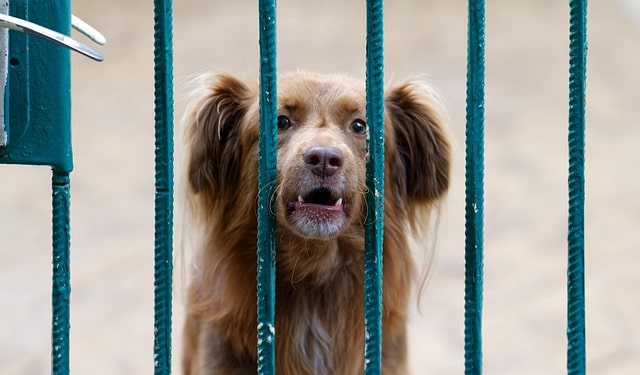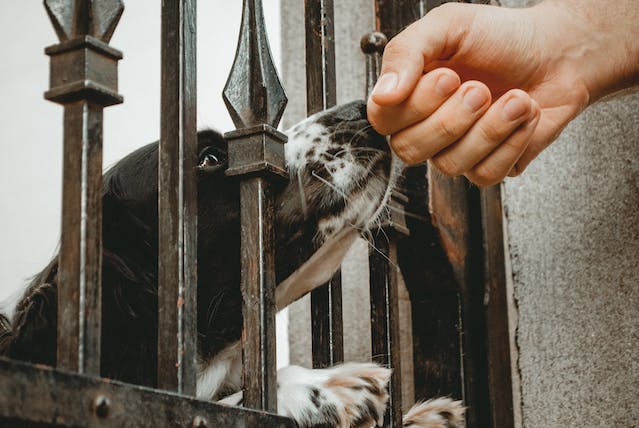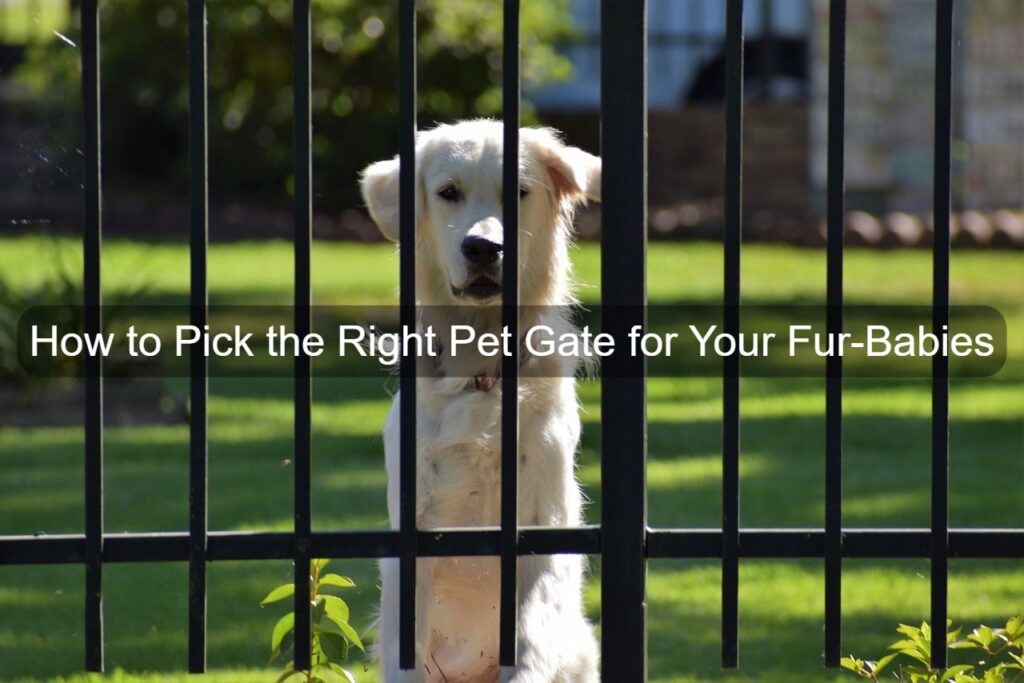Choosing the perfect pet gate is more than a functional decision—it’s an investment in your pet’s well-being and your home’s aesthetics. In this guide, we’ll simplify the complexities of selecting the ideal pet gate. From materials that blend seamlessly with your decor to locks ensuring utmost security, we’ll guide you on how to create a safe and secure abode for your fur-babies — without compromising on style!
How to Pick the Right Pet Gate?
To make a wise, well-rounded choice — make sure you consider the following factors when buying a pet gate:
1. Types of Gates

When it comes to pet gates, one size—or rather, type—doesn’t fit all. So, understanding the different types of each gate variety is crucial.
Here are some:
- Pressure-mounted gates: These are versatile and easy to install, perfect for temporary use.
- Hardware-mounted gates: These offer stability and are ideal for high-traffic areas.
- Freestanding gates: These provide a movable barrier, while retractable gates seamlessly vanish when not in use.
Pick a type that aligns with your preferences, your pet’s needs, and your living space dynamics.
2. Material
The substance of your pet gate is not just about durability; it’s a style statement for your living space. Some of the most common materials used for pet gates are:
- Wood
- Metal
- Plastic
Wood gates exude warmth and blend effortlessly with traditional decor. But metal gates are robust, perfect for more active pets. On the contrary, plastic gates offer flexibility and are often more budget-friendly.
3. Size

The size of your pet gate is pivotal in ensuring both safety and functionality. We recommend beginning by accurately measuring the space where the gate will be installed. Take into account the width and height needed to effectively contain your pet. Avoid gaps that might pose a hazard.
Whether securing doorways, hallways, or stairs, understanding the dimensions of your living space ensures a snug fit and it creates a secure environment that aligns well with your pet’s needs.
4. Lock
The lock on your pet gate is the guardian of your pet’s safety. Choose a lock that not only keeps your gate securely in place but also allows convenient access for you.
Consider one-handed operation for ease and efficiency. Or you can explore different locking mechanisms such as latches. Just make sure they’re robust enough to withstand persistent pets.
5. Cat Door

For households with both dogs and cats, a pet gate with a built-in cat door adds an extra layer of convenience and freedom. These gates allow your feline friends to navigate through spaces while maintaining a barrier for larger pets.
Consider the dimensions of the cat door and ensure it accommodates even the most adventurous felines. Given that, a tall cat gate offers the perfect solution. It allows your cats to explore without compromising the security and boundaries set by the pet gate. As these are tailored to cater to the diverse needs of your entire fur-family, they maintain a balance between accessibility and control.
6. Ease of Installation
Opt for pet gates that are easy to install, i.e., the ones that require minimal tools and provide clear instructions. These will save you quite a lot of time!
Pressure-mounted gates are often a popular choice for their hassle-free setup. They eliminate the need for hardware.
Ensure that your chosen gate aligns with your DIY comfort level. This way you can enjoy a stress-free installation process that doesn’t ultimately compromise the safety and security of your pets.
7. Adjustability
Pet owners often face the challenge of irregularly shaped doorways or unconventional living spaces. The best way to deal with this is to opt for a gate that’s adjustable.
Invest in a pet gate that offers customization options to fit various dimensions. Gates with extendable panels or adjustable widths provide versatility, ensuring they’re a good fit regardless of the setting.
This adaptability not only addresses unique spatial challenges but also future-proofs your investment. You’ll be able to deal with any changes in living arrangements and evolving pet dynamics with ease.
8. Safety

The primary purpose of installing a pet gate is to ensure your dog’s or cat’s safety. So, look for gates with smooth edges to prevent any unintended injuries during exploration.
Sturdy construction is non-negotiable, especially for more robust pets. Check for certification standards that ensure the gate meets safety regulations. Beyond the physical aspects, also evaluate potential hazards, such as small openings or protruding parts.
9. Aesthetics
Pet gates don’t have to be eyesores! Explore options that complement your interior style, whether it’s the warmth of wooden gates, the modern touch of metal, or the versatility of plastic.
Consider customizable or paintable gates for a personalized touch. Aesthetics isn’t just about appearance; it’s about creating a living space where your pet gate becomes an integrated, stylish element. They should harmonize well with your home while serving its vital function as a guardian for your pets.
10. Price
Pet gates come with a range of price tags, typically correlating with materials, features, and brand reputation.
Wooden gates may range from $30 to $100, metal gates from $40 to $150, and plastic gates from $20 to $70. Consider your budget alongside the gate’s durability, features, and aesthetic appeal to make a wise investment in your pet’s safety and your home’s decor.
Final Thoughts on How to Choose Pet Gate
In the pursuit of pet gate perfection, remember: safety need not compromise style. If you shop smartly, you can conveniently find a pet gate that goes well with your interior decor, meets your pet’s safety needs, and fits in your budget — so make sure, you give this enough time and effort. Good luck!





